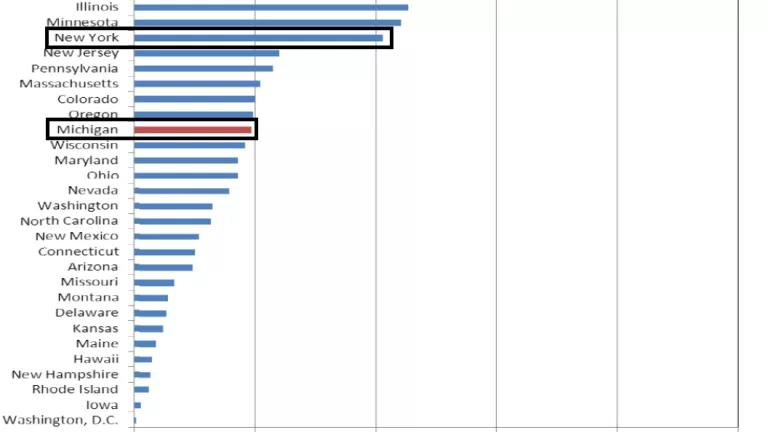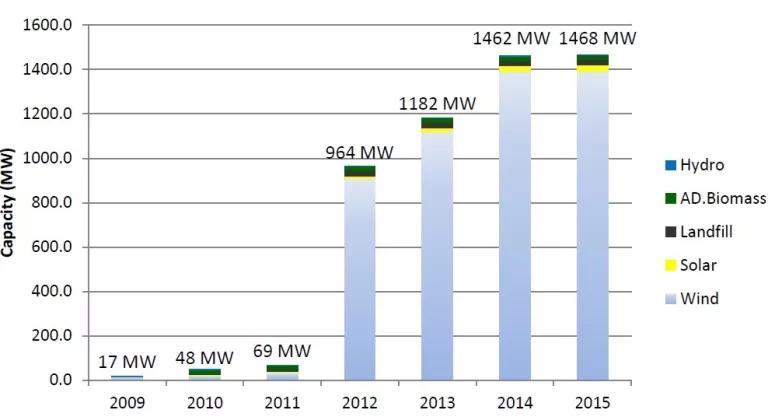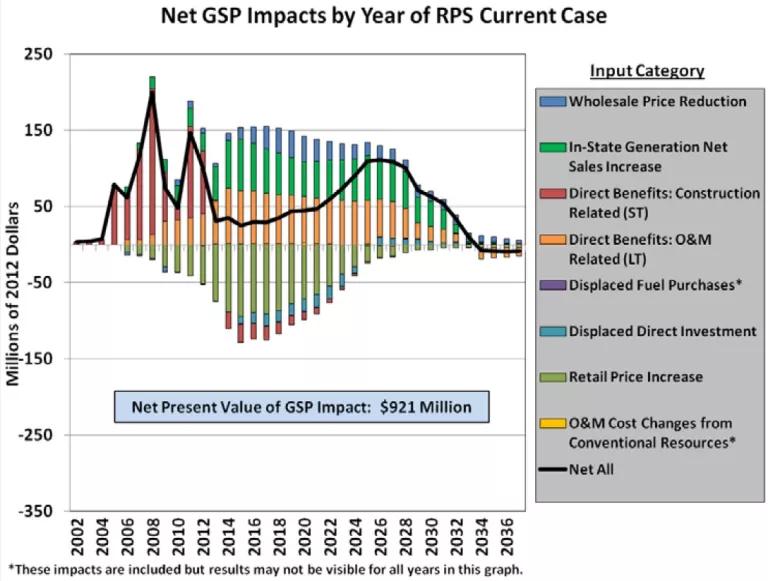Michigan and New York renewable portfolio standards (RPS) are adding jobs and reviving economic growth

[Revised Nov 19, 2013*]
The policy known as the Renewable Portfolio Standard (RPS), whereby retail electricity providers are mandated to meet an increasing share of sales from the competitive procurement of clean and renewable energy is proving successful as a viable framework for deploying a significant amount of renewable generation at the state level. 29 states in total plus Washington, D.C. are successfully deploying RPS policies to obtain homegrown, affordable, clean and renewable energy resources. In the last few weeks, Michigan and New York each completed policy reviews of their respective RPS programs.
New Renewable Energy Generation Supported by State RES Policies to 2015 (Source: Union of Concerned Scientists)
The RPS policies in Michigan and New York are part of a broader integrated suite policies and programs in each state that are working to deploy clean energy resources. These other policies include net metering for distributed level renewables and rooftop solar as well as often overlooked energy efficiency that is dramatically lowering the cost of energy for everyone.
Both Michigan and New York existing RPS policies are nearing the end of their currently mandated timeline – 2015 to be exact.
Michigan
A recently finalized report by the Michigan Governor’s office concluded that the state is well on its way towards meetings its “10% by 2015” goal, obtaining this small but growing portfolio renewable energy for far cheaper than originally predicted. The state could affordably achieve as much as 30% renewables in the next decade. The Michigan RPS was enacted in 2008 by the Clean, Renewable, and Efficient Energy Act (Public Act 295).
Reliable numbers:
- Significant growth in wind capacity and the state’s strong wind manufacturing industry are creating jobs: As many as 4,000 people are hard at work at wind farms and nearly 40 wind manufacturing facilities in the state.
- Nearly $1.8 billion in new investments support renewable energy projects and reductions in carbon pollution.
- Reduction in dirty energy imports. In 2011 Michigan used coal for 54 percent of its net electricity generation with much of it imported from Wyoming.
The bulk of renewable resources have come from onshore wind thus far with solar showing rapid growth (Figure below).

Renewable Resource Deployments Under the Current Michigan RPS 2009 to 2015 (Projected)
And while not all areas are suitable for offshore wind development – thorough environmental planning and development safeguards are needed – Michigan’s thousands of miles of freshwater “coastline” provide the state with a very large offshore wind potential.
An additional vote of confidence for moving ahead with a stronger and more aggressive RPS came from the regional transmission grid operator – named the Midcontinent Independent System Operator (MISO), whose territory in the Northern Plains, Central Canada, and Upper Midwest, including most of Michigan. MISO concluded that the increased amount of wind and solar and other variable output resources required to meet a “25% by 2025” or even “30% by 2030” outcome for Michigan is operationally feasible and will not significantly hinder reliability thanks to several regional planning and market initiatives the MISO is implementing.
New York
The New York RPS was enacted administratively in late 2004 with an original statewide goal of achieving “25% by 2013.” The target was later increased in 2009 to “30% by 2015.” Although the state has fallen behind the pace of renewables deployment that would reasonably allow the state to achieve its “30% by 2015” goal (we estimate the state will get about 80 percent of the way there by the end of 2015), that shortcoming should not overshadow the exceedingly positive economy-wide impacts that the RPS has created, and will continue to deliver for many years ahead, for the state according to the latest reporting on the program’s status by the New York State Energy Research and Development Authority (NYSERDA).
Reliable numbers:
- The impact on utility customer bills (i.e. rates) was is essentially zero.
- Statewide electricity imports are declining and will eventually offset nearly 5% of imports imported electricity.
- Net economy-wide jobs gain of 670 jobs (with several thousand new jobs accounted for in the state’s fast-growing solar and wind industries).
- Contributing to Result in net gross state product (GSP) growth of around $2 billion (net present value) - see Figure below.
- Avoided Has and will continue to avoid tens of millions of tons of greenhouse gas emissions.
- All told, the NY RPS saw an will deliver an overall benefit to cost ratio of approximately 5 to 1.

NYSERDA (2013) RPS Main Tier Program Review Vol. 2, Figure 17: Net GSP Impacts by Year of RPS Current Case
The shortcomings toward meeting the existing “30% by 2015” goal in New York can partially be explained by unforeseen “global” forces, e.g., the 2009 economic meltdown and natural gas “glut” causing wholesale energy prices to fall, as well as program administration technical hitches that state implementers are working to rectify. In addition, with the newly proposed Green Bank that would allow more private capital to finance successful clean energy projects both large and small along with taking further steps toward developing environmentally sound, well-sited offshore wind resources , New York could reclaim the title as the most progressive state clean energy leader with a bold-but-achievable “50% by 2025” RPS goal.
Beyond 2015
The state RPS policies in both Michigan and New York are netting new economic growth and jobs while reducing energy imports, pollution and greenhouse gas emissions. These RPS policies enrich the economy and environment. With both states’ current RPS policies set to expire in 2015, the time is right for both Michigan and New York to take bold steps to extend their successful RPS policies by increasing their renewable energy goals with more aggressive deployment rates.
-----
*This post was updated on November 19, 2013 to more accurately interpret the findings of the NYSERDA RPS Main Tier Program Review Report, which captures the program impacts (economy- and utility system-wide benefits and costs) from the past, present and most likely future scenario of renewable energy deployment resulting from continued program implementation.
